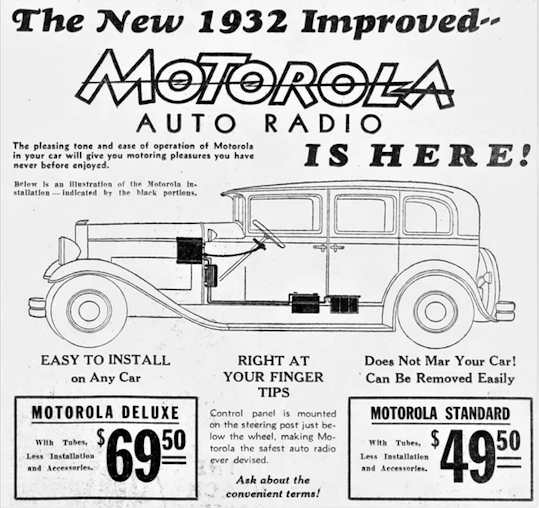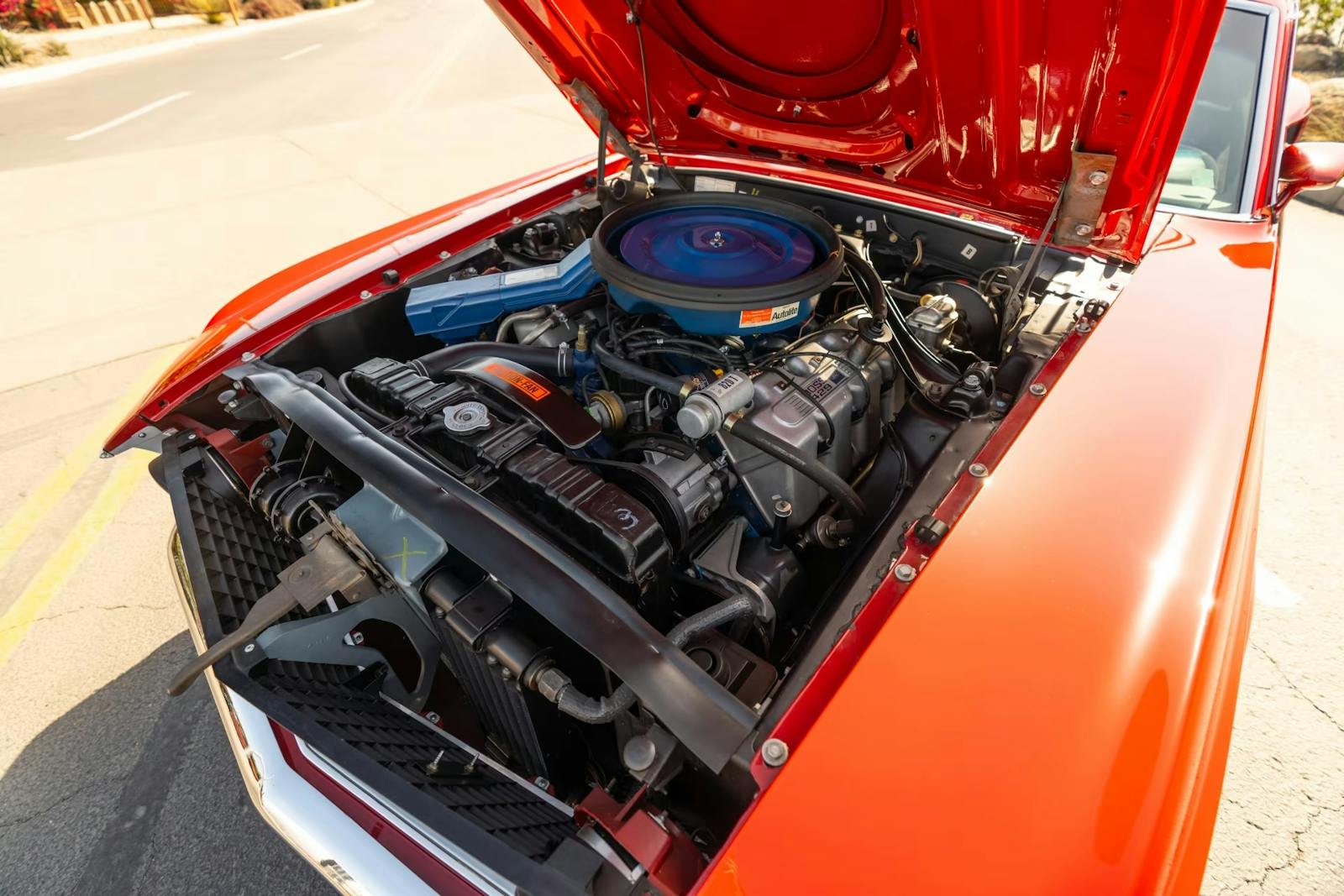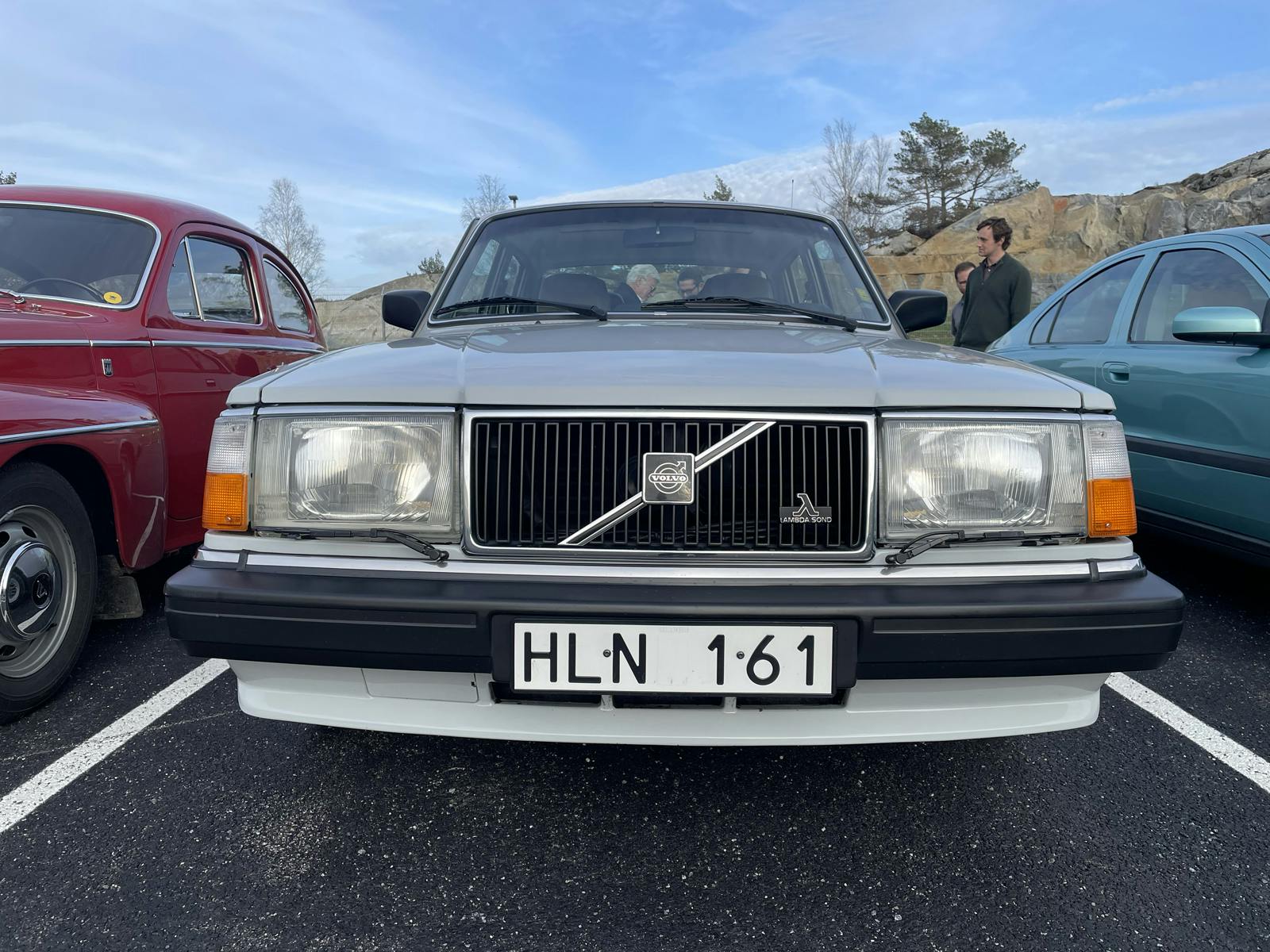95 years ago, Galvin began building the first affordable in-car radio
In-car entertainment sure has evolved in the last 95 years, but it likely owes a lot to the initial efforts of Paul and Joseph Galvin and the Galvin Manufacturing Corporation. Before Galvin Manufacturing’s entry into the market, the in-car radios were items for the wealthy. Buying one could run you as much as $250 in 1926, rivaling the contemporary asking price of a new Model T. Galvin’s product, by contrast, cost around $100–130. But it took time, as the product was introduced in June 1930, almost two years after the concept was green-lighted.
We can cut the folks at Galvin some slack, as they overcame the hurdles of engine ignition interference, durability for unpaved or even non-existent roads, and the packaging constraints of cars with modest cabin space and even smaller dashboards. The engineering was spot on, but the business fortitude was triumphant, as they were enduring an uphill battle of economic headwinds headed their way.
With so many accomplishments hiding under a single product, a unique name was almost mandatory: Motorola. The name is a portmanteau of a moving vehicle (motor) and an audio source (the “ola” suffix was a naming convention of the era, and popularized by Victrola). It was clearly catchy enough to put the Galvin name to rest, as the company was renamed Motorola Inc. in 1947.

No matter the company name, the Motorola 5T71 was introduced in 1930, after Paul Galvin famously drove his Motorola-equipped Studebaker from Chicago to Atlantic City, making a splash at the 1930 Radio Manufacturers’ show. But Paul wasn’t an exhibitor at the show; rather, he parked his Studebaker in a high-traffic location at the Atlantic City Pier, amped up the Motorola with external speakers/amp, and let curious showgoers come his way. Turning a car into a mobile boombox takes some creative bootstrapping, and likely became the first display of audio superiority in a motor vehicle parked for display purposes!
Despite his daring promotional antics, the Motorola 5T71 wasn’t terribly successful from the get-go, as it required multiple components to install (including a separate battery) and was marketed during the worst economic period in American history. But prices dropped significantly and quickly, just like the automobile a mere twenty years before. Lower prices demanded more avenues to sell, so strategic partnerships became a significant revenue source. The Motorola was sold elsewhere as factory equipment for 1933 Fords and installed at any BF Goodrich tire store in 1934.

As the advertising above suggests, the asking price roughly halved during the decade immediately following the 5T71’s initial offering. And wow, that’s a serious price drop, on par with any modern day tech company scaling up and selling out in stores. Speaking of historical context, as with many bits of new technology in life, the AM Radio for Every Vehicle Act has, thanks to bipartisan support, a darn good chance of becoming law. This means the legacy of Galvin Manufacturing is likely to endure for many more decades, setting back the sands of time once again thanks to the irreplicability of AM radio.
Who knows, maybe the 95-year legacy of Galvin Manufacturing’s innovation, parked at a pier in Atlantic City for everyone to enjoy, is far from the end. So strike while the iron is hot (or at least lukewarm) and thank your lucky stars that the mass market radio was green-lighted into reality on this very day.
***
Check out the Hagerty Media homepage so you don’t miss a single story, or better yet, bookmark it. To get our best stories delivered right to your inbox, subscribe to our newsletters.



Sajeev, I love these articles featuring automotive history!
Here’s a somewhat related teaser/tidbit: what car could be identified by its interference with your television reception? There’s one that really stood out.
And I love putting the pieces together to make these articles!
That’s a hard bit of trivia, I have no idea!
Older VW Beetles.
They were also always identifiable when cresting a hill as they approached — their front parking/signal lights were atop the fenders, so they’d appear before the headlights.
Wow, that’s a fun factoid. Thanks for sharing.
Very cool story of the first radio.
Thanks for the tip about the AM Radio Act. I’m am going to write my Congressman and Congresswoman to see about the “Aftermarket Exhaust for Every Corvette Act” idea I have.
Here is some trivia about Motorola’s impact on quality : “Motorola pioneered Six Sigma, setting a “six sigma” goal for its manufacturing business. It registered Six Sigma as a service mark on June 11, 1991 (U.S. Service Mark 1,647,704); on December 28, 1993, it registered Six Sigma as a trademark. In 2005 Motorola attributed over $17 billion in savings to Six Sigma.”
BYTM-Robert William “Bob” Galvin (October 9, 1922 – October 11, 2011) was an American executive. He was the son of the founder of Motorola, Paul Galvin, and served as the CEO of Motorola from 1959 to 1986.
And: Born in Marshfield, Wisconsin, Galvin went to work for Motorola in 1940. He graduated from the University of Notre Dame in 1944.[1] In 1956 he was named the president of the company. Two years later he succeeded his father as a chief executive officer.
In 1986, Bob Galvin gave up the title of CEO while remaining chairman of the board. Under his leadership, Motorola sales had grown from $216.6 million in 1958 to $6.7 billion in 1987 and cash flow per share had grown from 89 cents to $6.10. Bob Galvin also was instrumental, along with Dr. Mikel J Harry and Motorola engineer Bill Smith, in implementing the Six Sigma quality system at Motorola.
As a result of the Six Sigma program, Motorola received the first Malcolm Baldrige National Quality Award in 1988, which is given by the President of the United States. Later, the Six Sigma processes subsequently were adopted at the General Electric Corporation. Jack Welch said: “Six Sigma changed the DNA of GE.”[2][3] The Six Sigma process requires 99.99967% error free processes and products, or 3.4 parts per million defects or less.[4]”
More than anyone will ever need to know.
As an Operations Management student in college, I thank you for sharing that. Six Sigma was definitely a significant chunk of my life.
Thank you! That was a pretty long comment cribbed from Wiki, but I couldn’t help but geek out on Motorola and Six Sigma. I spent 40 years in Quality Assurance and Project Management. My significant other has put her foot down on any more Kaizen events or 5S exercises around the house.
Wow, the way you talk about these concepts is pretty awesome. (Your significant other is wrong!) I will not go as far to say that I miss my days as a project manager, but I have a feeling that folks like you would make me remember it more fondly.
Now we’re doing 6S instead of 5S :). Thanks for this great article! As a longtime Motorola engineer, I am and was justifiably proud of the long legacy and history of the company, starting with the car radios in the 30s. Six Sigma was a big deal at the company when I joined right out of college in the early 90s. Unfortunately our decline began in the late ’90s under the 3rd generation of Galvin (Chris) and the company essentially disappeared. The name is still out there but it bears little resemblance or connection to the Motorola of yore. Bob Galvin was well-loved and respected within the company.
Motorola also built the 2-way radios that helped win WW2 and connect astronauts from the moon. Instrumental in the creation of the cellular networks and most of the early phones. They also made most of the police radios and dispatch equipment, not to mention microprocessors, TV’s and portable transistor radios. The original semiconductor was developed in a Motorola lab, not far from where Galvin Parkway currently links Phoenix and Scottsdale though Papago Park in AZ. Sad that later management fumbled, lost direction and sold off the scraps of an American icon.
Great info. And so sad about the American manufacturing icons that have bitten the dust. I know it’s an “OK, Boomer” vibe for most readers, but that’s the way it is!
Now I get it is history (sic).
Another great article, Sajeev, thanks. And thanks also to all of the knowledgeable commenters. This was a few minutes well spent!
Thanks for reading, Lewis! I sincerely appreciate you hanging around for all the comments too.
A question about those early radios: I see they used an extra battery. Do they use 12volt or 6volt and are they positive or negative ground. I have one of these around somewhere and would like to try to make it work for my 1930 Hupmobile Cabriolet. Thanks